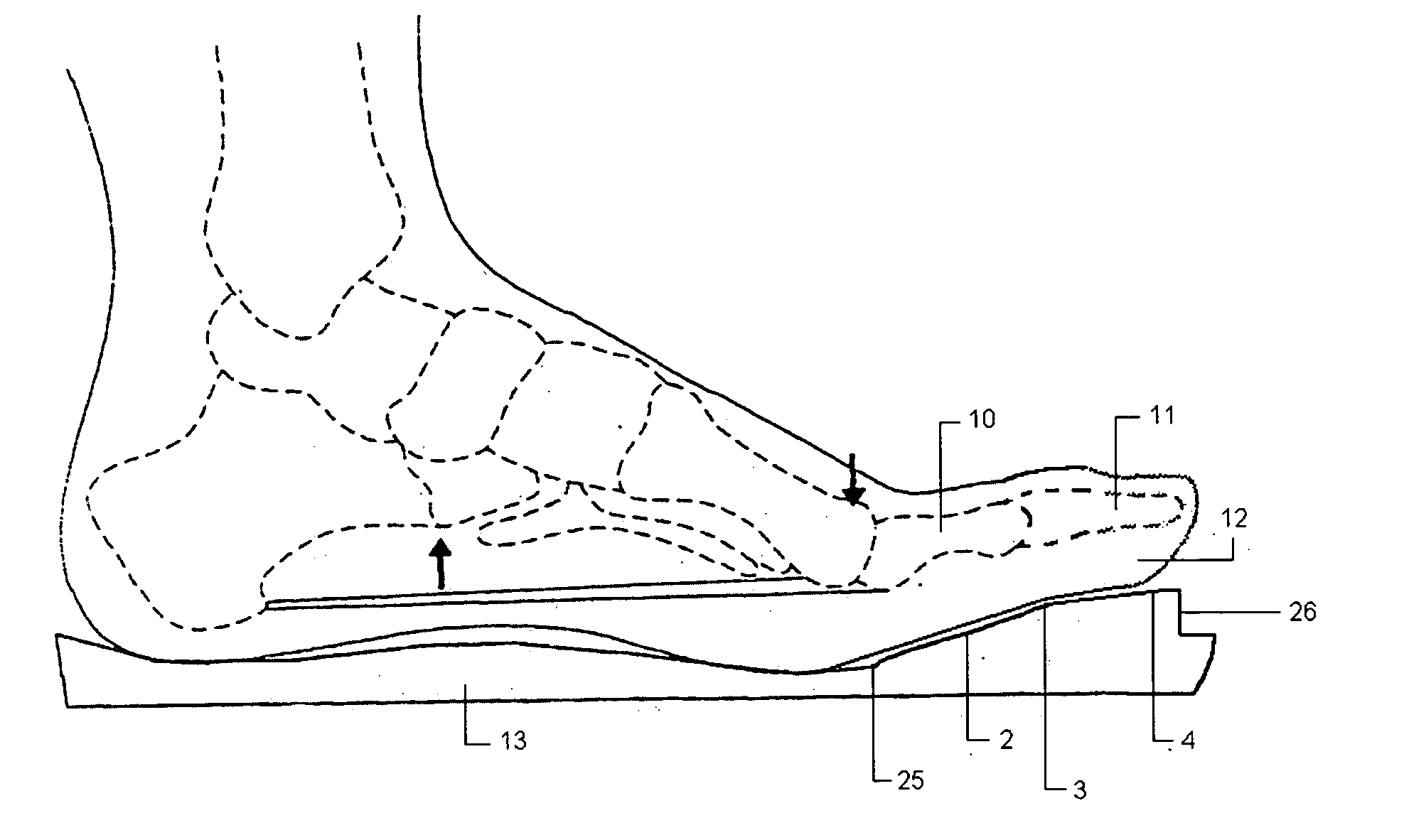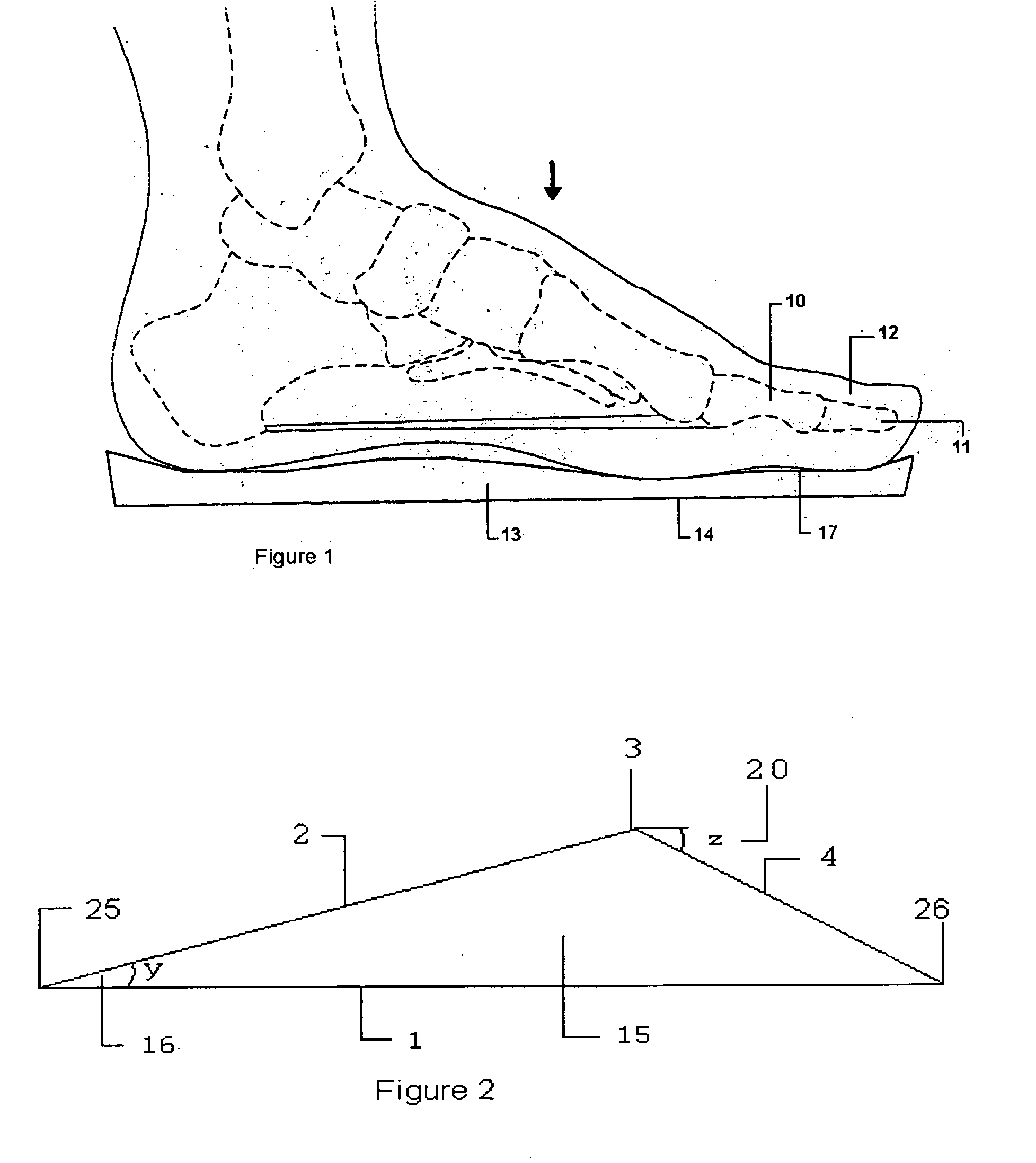Orthopedic shoe appliance and method
a technology for orthopaedic shoes and devices, applied in the field of orthopaedic corrective devices and methods, can solve the problems of large toes, large toes, and excessive mobility of the medial arch area of the foot, and achieve the effect of improving the stability of the foo
- Summary
- Abstract
- Description
- Claims
- Application Information
AI Technical Summary
Benefits of technology
Problems solved by technology
Method used
Image
Examples
Embodiment Construction
[0061] First, this invention improves the stability of the foot structure during ambulation. With increased medial column stability of the foot, pain is alleviated in the lesser metatarsal area of the foot. Elevation of the proximal phalanx accomplishes several significant biomechanical sequences which have the effect of providing a supinatory position of the subtalar and midtarsal joints as well as pronation of the longitudinal midtarsal joint. As dorsiflexion of the toes takes place in late midstance and early propulsion, the plantar fascia is placed on stretch. As this occurs, the arch height is increased or the distance between the heel and the ball of the foot is shortened. This results in overall supination of the foot structure which provides for more stability of the foot during stance.
[0062] The second advantage to the present invention is alleviation of foot pain caused by limited dorsiflexion of the first metatarsalphlangeal joint. A pronated rearfoot and a supinated for...
PUM
 Login to View More
Login to View More Abstract
Description
Claims
Application Information
 Login to View More
Login to View More - R&D
- Intellectual Property
- Life Sciences
- Materials
- Tech Scout
- Unparalleled Data Quality
- Higher Quality Content
- 60% Fewer Hallucinations
Browse by: Latest US Patents, China's latest patents, Technical Efficacy Thesaurus, Application Domain, Technology Topic, Popular Technical Reports.
© 2025 PatSnap. All rights reserved.Legal|Privacy policy|Modern Slavery Act Transparency Statement|Sitemap|About US| Contact US: help@patsnap.com



